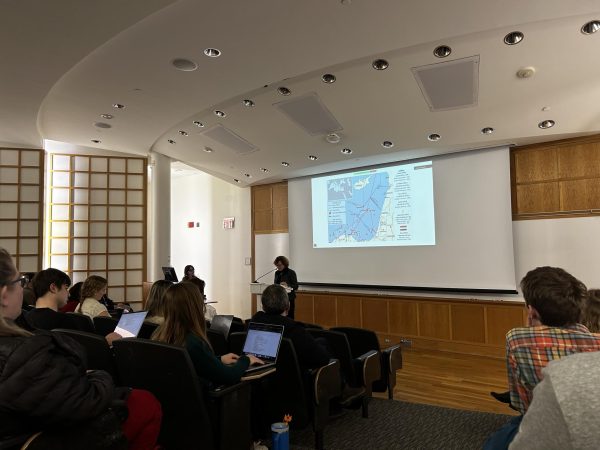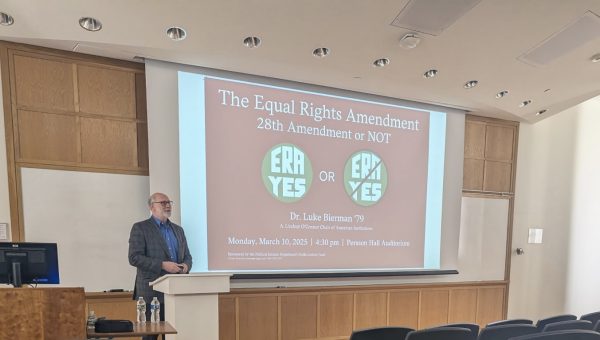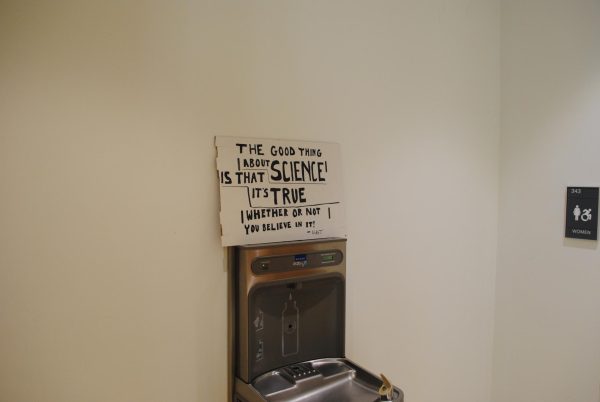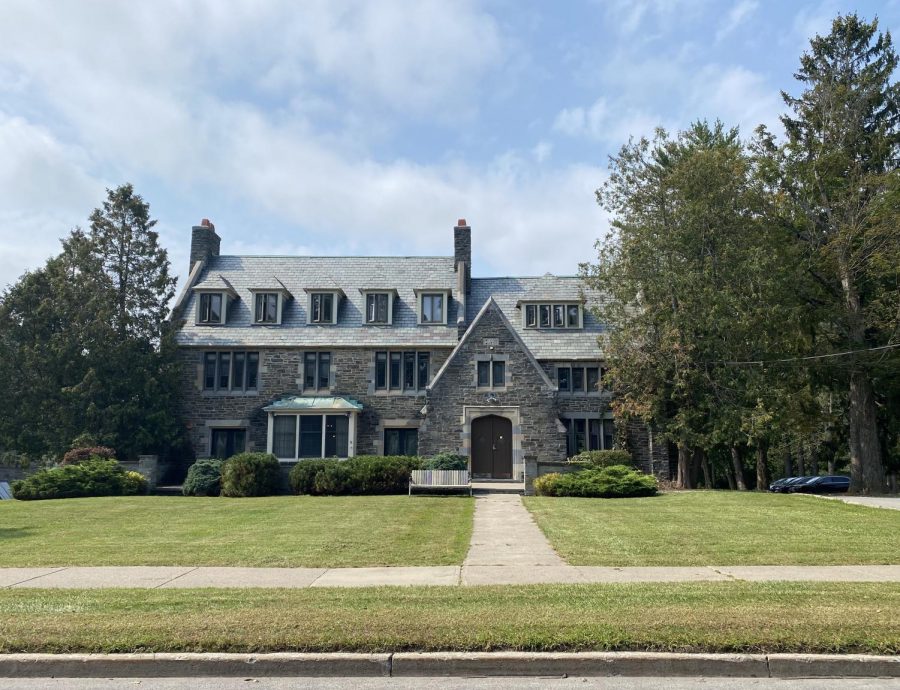University Converts Residential Spaces On and Off Campus for Student Isolation
Printed with the Permission of Natalie Marcus-Bauer
ISOLATION SPACE: Students isolate in several off-campus facilities after surge in COVID-19 Cases, including 76 Broad Street.
Last week, the Colgate community experienced a surge of COVID-19 cases, causing a large number of students, faculty and staff to move into self-isolation spaces both on and off campus. Classrooms returned to fully-masked environments, some professors made accommodations for isolated students through the use of Zoom technology and long lines continued to form outside of designated testing centers.
In response to the surge, the University has reinstated contact tracing protocols in accordance with CDC guidance for both fully vaccinated and unvaccinated students that may have been exposed to, or feel at risk for, contracting COVID-19.
Senior Director of Communications and Media Relations Daniel DeVries co-authored a series of responses with Director of Student Health Services Dr. Merrill Miller for the Maroon-News this week regarding general expectations for on-campus testing and advice for students anticipating isolation.
Colgate is supporting students who cannot travel home for isolation by utilizing a number of alternate quarantine spaces, according to DeVries.
“Living situations are not the focal point of isolation protocols. Isolation separates people who have tested positive for COVID-19 from others, regardless of if they have symptoms or not. Students who test positive would be relocated to prevent spread to a roommate,” DeVries said.
DeVries also noted that there are rare instances in which it makes more sense logistically to move a roommate and allow a student to isolate in place, but that those situations operate on a case-by-case basis.
In response to the substantial shift in testing protocol since last year, along with the growing concern among students who are unsure of when and where to get tested, Miller offered words of assurance and encouragement regarding the community’s high vaccination rates.
“While the Delta Variant is more contagious than the original SARS-CoV-2 virus, our high vaccination rate helps to prevent serious illness, and most cases that have been identified on campus are in those who are either not showing any symptoms, or who have very mild symptoms similar to a common cold,” Miller said. “In light of this, and in accordance with CDC guidance, vaccinated students do not need to seek testing unless they are identified as a close contact, or should they exhibit symptoms that would typically result in a doctor visit — sore throat, high temperature, persistent cough, severe headaches, etc.”
Many students identified as close contacts tested positive and went into isolation in designated quarantine spaces on campus and across the town of Hamilton, including their primary on or off-campus residences, 76 Broad Street housing — the retired Kappa Delta Rho Fraternity House (KDR) — and the Colgate Inn. Other students opted to go home to quarantine and some took residence in hotels in Utica.
Senior Piper Robinson, one of the first five students placed in the Colgate Inn due to a shortage of isolation space in KDR, noted that students and staff alike felt a sense of disorganization and confusion during the first night of quarantine.
“The first night I could kind of tell that nobody really knew what was going on, but we had a lot of contact with the front desk, who were all very accommodating and friendly,” Robinson said.
Students at the Inn have scheduled outdoor time in the field behind the public library, and have been in contact with Quarantine/Isolation Compliance Manager Stacey Millard regarding the guidelines specific to this isolation space.
“I am assuming that this is not a permanent fix for an isolation spot for [COVID-19] positive students, but I am very happy with my situation, and if I had to get COVID, this is where I would want to isolate,” Robinson said.
Millard offered clarification on the policies in place at 76 Broad Street that enable it to be a quarantine space for students who were unable to return home for isolation. Last year, the facility was successfully utilized to support travel quarantines, chosen for its proximity to campus support and resources. In total, there are 24 beds available, a single use bathroom on the first floor and a shared bathroom on the second and third floors. Linens and personal protective equipment (PPE) are provided to students upon arrival and, within the first few hours of checking in, students are contacted by Millard and Dining Services. Chartwells delivers meals to students in 76 Broad Street regardless of their existing meal plan.
“As the need for isolation space has increased in the last two weeks, Colgate has made temporary isolation lodging arrangements in other appropriate locations, including by leasing additional privately-owned houses within the Village of Hamilton,” Millard said. “At this time, the University is not exploring other options on Broad Street since on-campus occupancy is very high this semester and those spaces are already in use.”
Regardless of the precautionary measures in place, the unexpected shift from routine wellness testing to identifying a surge of positive cases proved disorienting for students who went into isolation. Junior Kai Dasbach, currently isolating in KDR, spoke of her experience with moving out of her 16 person townhouse, wherein she and three of her housemates who also tested positive each moved into a double room within the isolation space.
“Isolating was not terrible for me because three of my close friends were also in isolation, so we could see each other with our masks on, although they did ask if I could figure out a way to go home; I’m assuming because of the limited space in KDR,” Dasbach said. “I would advise people to bring their own bedding as the sheets and blankets that the school provides are very thin.”
Dasbach also noted that the hardest part about isolation was not being able to keep up with school work and having to miss classes. Professors have the authority to decide whether or not to offer a remote learning option and, as some have opted against it, many students have had to miss classes altogether.
Senior GeGe Pflager spent all of last week isolating in her downtown apartment and expressed similar feelings of frustration with the transition from in-person to online classes, despite her relatively comfortable quarantine environment.
“I was never checked on, and my professors had no way to use Zoom, so I couldn’t go to class all week. And I never even got an email about temperature checks, despite telling them that I was symptomatic,” Pflager said. “It definitely was a different experience than going through quarantine last year, but I’m just glad to be feeling better and ready to get back to in-person activity.“
Information regarding expectations for close contacts, as well as next steps in the case of suspected illness can be found on the COVID-19 Testing and Tracing Page of the University website.
Erin Knox is a senior from Branford, CT concentrating in English with a minor in economics. She has previously served as a staff writer for The Maroon-News....






